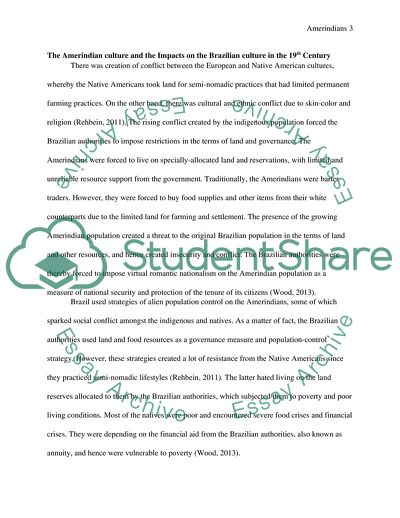Cite this document
(Brazilian Adoption of the Amerindian as a Potent Symbol of Romantic Essay Example | Topics and Well Written Essays - 2000 words, n.d.)
Brazilian Adoption of the Amerindian as a Potent Symbol of Romantic Essay Example | Topics and Well Written Essays - 2000 words. https://studentshare.org/history/1863679-why-should-the-amerindian-have-been-adopted-as-such-a-potent-symbol-of-romantic-nationalism-in-nineteenth-century-brazil
Brazilian Adoption of the Amerindian as a Potent Symbol of Romantic Essay Example | Topics and Well Written Essays - 2000 words. https://studentshare.org/history/1863679-why-should-the-amerindian-have-been-adopted-as-such-a-potent-symbol-of-romantic-nationalism-in-nineteenth-century-brazil
(Brazilian Adoption of the Amerindian As a Potent Symbol of Romantic Essay Example | Topics and Well Written Essays - 2000 Words)
Brazilian Adoption of the Amerindian As a Potent Symbol of Romantic Essay Example | Topics and Well Written Essays - 2000 Words. https://studentshare.org/history/1863679-why-should-the-amerindian-have-been-adopted-as-such-a-potent-symbol-of-romantic-nationalism-in-nineteenth-century-brazil.
Brazilian Adoption of the Amerindian As a Potent Symbol of Romantic Essay Example | Topics and Well Written Essays - 2000 Words. https://studentshare.org/history/1863679-why-should-the-amerindian-have-been-adopted-as-such-a-potent-symbol-of-romantic-nationalism-in-nineteenth-century-brazil.
“Brazilian Adoption of the Amerindian As a Potent Symbol of Romantic Essay Example | Topics and Well Written Essays - 2000 Words”. https://studentshare.org/history/1863679-why-should-the-amerindian-have-been-adopted-as-such-a-potent-symbol-of-romantic-nationalism-in-nineteenth-century-brazil.


